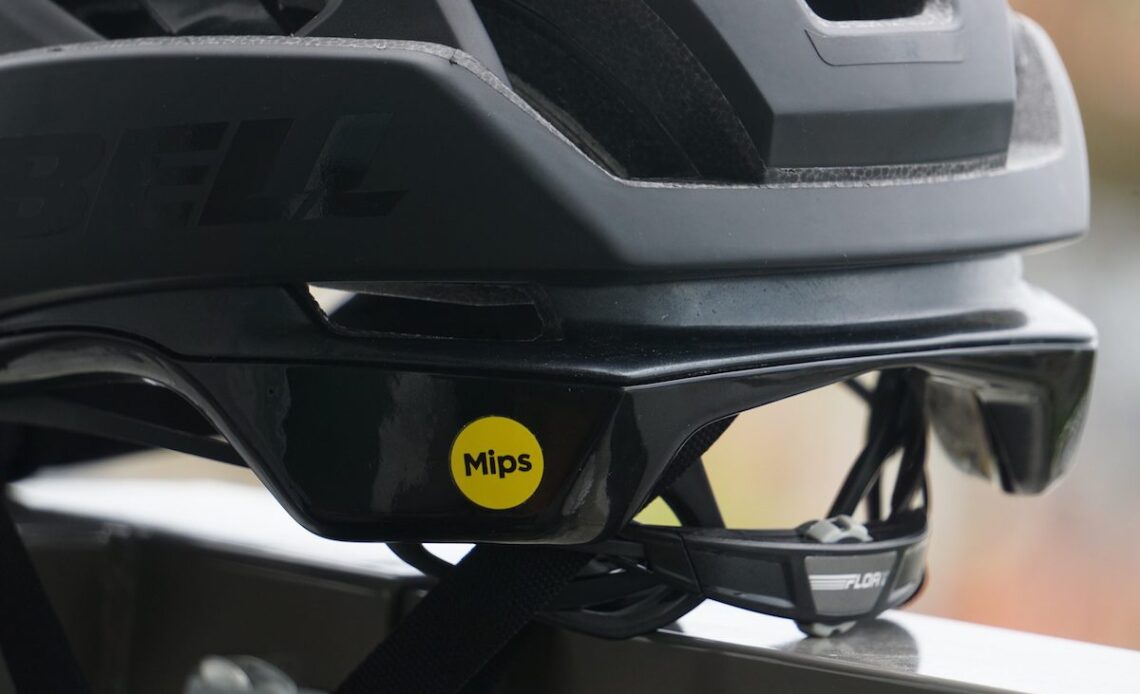Many cross country riders and racers use a road helmet, for the lighter weight and better venting. Same goes in gravel and cyclocross, too, where riders opt for a lighter helmet at the cost of coverage. But, with all those disciplines heading off-road, is a road helmet actually providing the right protection?
Bell aims to offer a better option, and cover a broad middle ground with the new XR Spherical.
How? It takes one of the brand’s top-end road helmets and adapts it to the needs of off-road riding. There’s more coverage, especially at the back of the helmet, while still keeping the minimalist design, cooling features and sub-300g weight of a road design.
Features: Bell XR Spherical
Bell uses MIPS’ distinctive Spherical system on the XR. It’s not immediately obvious until you take a closer look and see that there are two separate layers of foam that make up the helmet. This is MIPS’ “ball and socket” design. It’s intended to divert energy away from the head on impact by allowing the outer shell to rotate around the inner shell. The other benefit is that there is no inner MIPS, or other lining between the EPS foam and the pads, as there are in many designs aiming to reduce the effect of crashes. In addition to the Spherical design, Bell uses progressive layering, using different densities of foam in different parts of the helmet.
While this sounds like a lot, it’s actually quite a sleek package. The entire helmet weighs just 285 grams (in a size medium). That’s a good number, considering Bell extends the back of the XR further down the head than a traditional road helmet, giving more coverage should you crash.
Bell adds a full suite of features to the XR Spherical to make sure that when you stay upright on the bike, you stay comfortable. There’s a wide range of vents, including channels at the brow to help channel air directly over the head (Bell calls this “overbrow ventilation”). The Ionic+ padding includes one tab that extends out onto the front brim of the XR. This is intended to draw sweat away from glasses, so it doesn’t drip down and obscure your view. The helmet is held in place by Bell’s Float Fit system and the easy-to-use Fidlock buckle.
Finally, Bell extends the hard shell cover around the brim of the XR instead of leaving the EPS foam exposed to damage. This makes it safer to put the helmet on the…
Click Here to Read the Full Original Article at Canadian Cycling Magazine…

